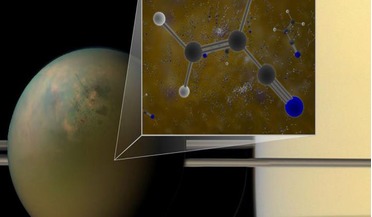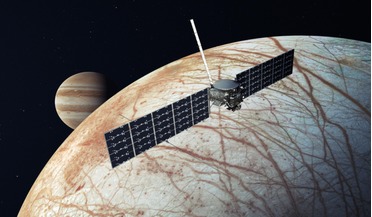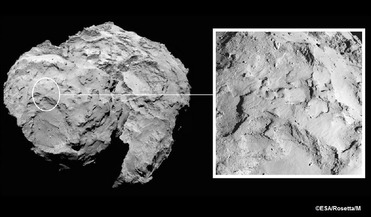 December 2017
Dressing up for space
December 2017
Dressing up for space
...people regain the pleasure of eating food. Tourist in space The aim was to find a relationship between life in space and life on Earth connecting the two environments (di Agostina Issolio, Aleksandra Obradovic and Barbara Lopes de Oliveira) This drew...
 31 July 2017
Complex chemistry on Titan may form membranes
31 July 2017
Complex chemistry on Titan may form membranes
... with liquid methane suggests the intriguing possibility of chemical processes that are analogous to those important for life on Earth," said Maureen Palmer, a researcher at NASA's Goddard Space Flight Center in Greenbelt, Maryland, and lead author...
 26 May 2021
Underwater volcanoes could be active on Europa
26 May 2021
Underwater volcanoes could be active on Europa
...on the list of objects to study for signs of life beyond Earth, even more so now, as new research shows that...magma. This discovery fundamentally changed our understanding of how life could develop on Earth. To understand if a scenario such as that ...
 08 December 2021
Iron might be key for finding life on other worlds, new study says
08 December 2021
Iron might be key for finding life on other worlds, new study says
... aware, these are the only two such organisms that do this - the rest of life on Earth depends on iron and one reason why life on our planet adapted to using iron is because there is plenty of it. While it's impossible to know for...
 December 2014
Rosetta revelations: the fabric of comet 67P/Churyumov-Gerasimenko
December 2014
Rosetta revelations: the fabric of comet 67P/Churyumov-Gerasimenko
... have brought other material. Of special interest here are organics that could have sparked the emergence of life on Earth. We are therefore looking for heavy organic molecules up to amino acids. COSAC on Philae should have been able...
 February 2017
Opening up the infinite frontier
February 2017
Opening up the infinite frontier
.... Moreover, it will be the biggest and most important shift in the trajectory of the human species and the life of Earth itself since we became a species. A garden setting inside a giant dome on a future Mars settlement, by artist Bryan Versteeg...